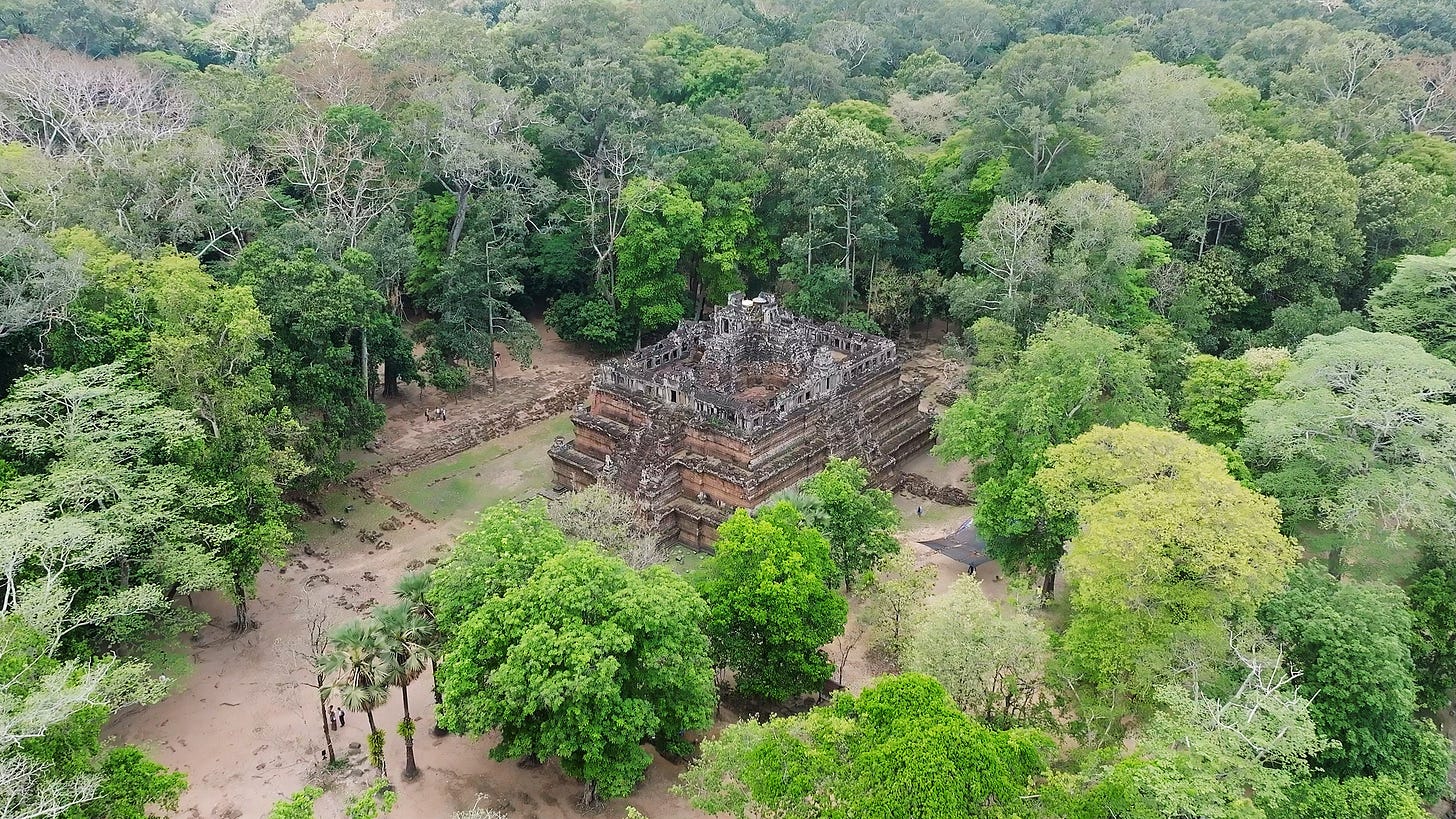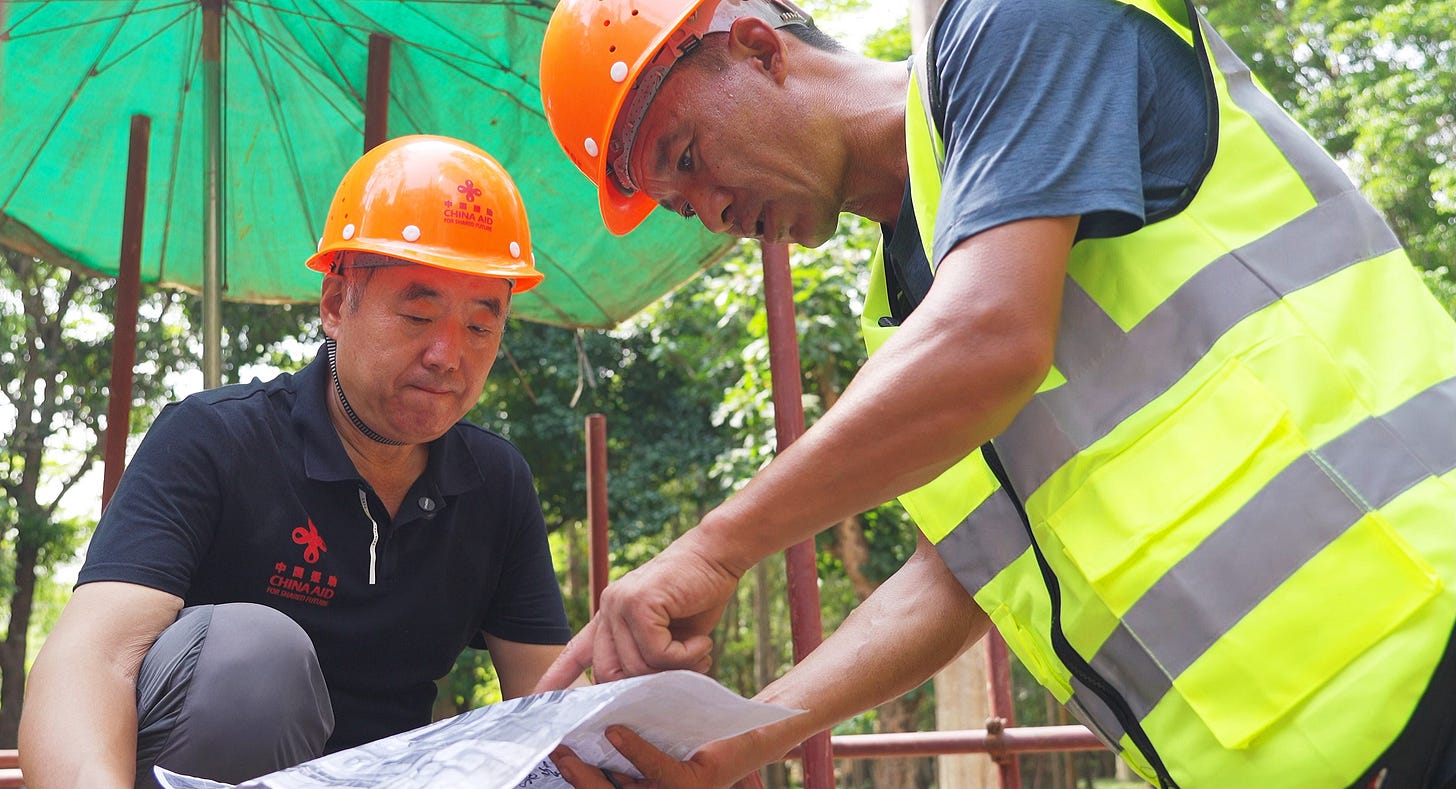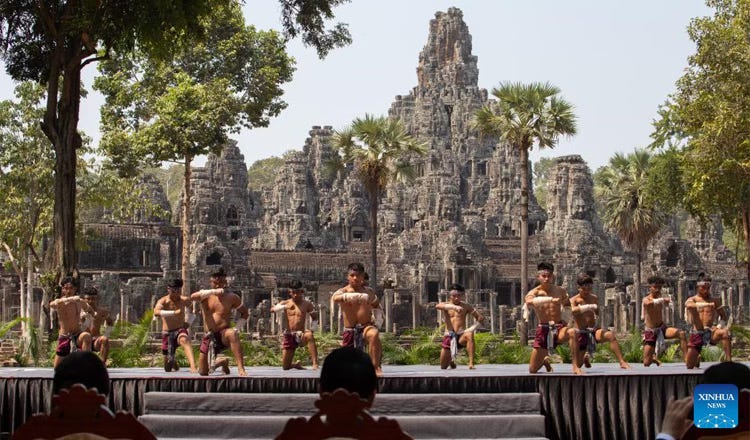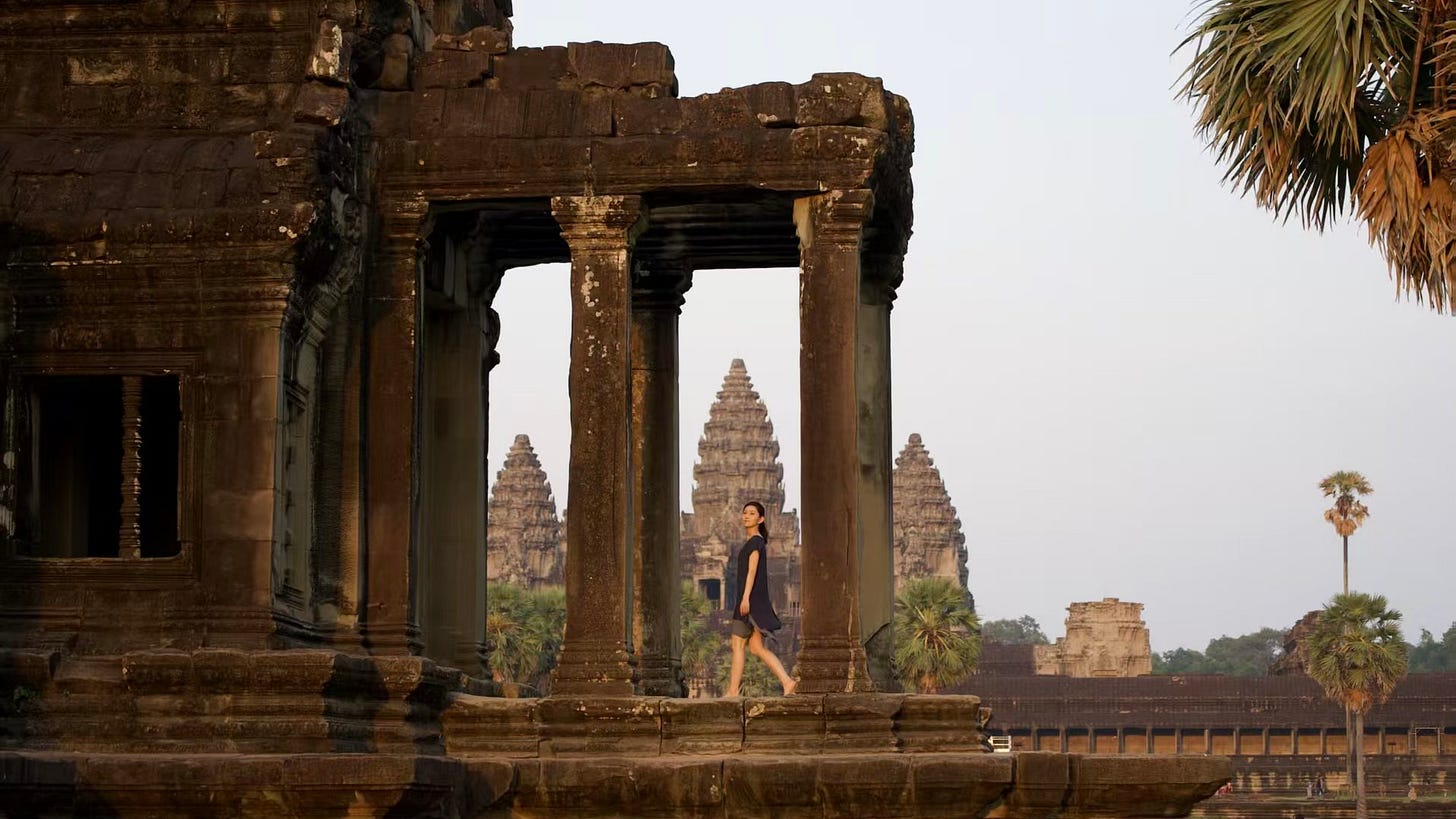For decades, the preservation of #Angkor - a #UNESCO World Heritage Site - has been a global mission. Among the many contributors, #China has played a vital and growing role. In this #documentary, Reviving Angkor’s Royal Palace, award winning documentary maker Miao Xiaojuan takes a journey deep into the jungles of northwest #Cambodia to uncover a long-forgotten treasure at the heart of Angkor Thom: the #RoyalPalace, once home to the #Khmer kings. Today, a Chinese-Cambodian team is carefully bringing this sacred place back to life, one stone at a time.
From the 9th to 14th century the Khmer Empire ruled much of mainland Southeast Asia, carving a monumental capital out of the jungle. This ancient wonder Ankor spans over 400 square kilometers in today’s Siem Reap, northwest Cambodia.
Not only does it belong to Cambodia, the world site is for everyone. While the temples of Tapron, Ankor Wat, and Bayon are known to many, the true soul of the kingdom lies in the heart of Angkor Thom. Here in the royal palace at its center stands Phimeanakas, a 10th century Hindu temple once the residence of the Khmer kings, still revered as the most sacred site in local memory.
You are working in the heart of Cambodia, the heart of the Khmer people. When this temple is very well restored it will be the most important, especially for the Cambodian people.
Over 400 years after Angkor’s fall, French explorer Henri Mouhot discovered these ruins. But it wasn’t until 1992 when UNESCO listed Angkor as a world heritage site in danger that true rescue efforts began. Experts from around the globe have come together to preserve this treasure of human civilization one stone at a time.
When you see each temple you will see different techniques using the international team come to help but at the same time to learn as well and to share to the world. Since 1993 China has played a vital role in this global undertaking restoring temples like Chau Say Tevoda and Ta Keo, and now reviving the royal palace.
The consistency is the key here, it’s not on again off again and it doesn’t come with a whole package of conditions that have to be met. Cambodia and China are working together thousand years ago. You can find the evidence on different temple carvings. The Chinese bring back the story of the connection between Cambodia and China and also connect to the world as well through this culture at Angkor.
The restoration project is a highlight for civilizational exchange and the Belt and Road initiative is to empower economies for their own development. A good example of that is the new airport at Siem Reap to protect Angkor Wat. The other airport was too close and so the turbulence from the aircraft was disturbing the sites. Without Chinese assistance that couldn’t have happened. It also opens up new travel routes for tourists here in the country.
Here in Angkor the voices of travellers from around the globe echo among the ancient stones. They tell stories of wonder, connection, and shared humanity. It’s not only preserving the rich culture that they have here but also it’s just showing that other countries are willing to help in this modern day. One of the things you learn traveling especially maybe for a lot of Americans who haven’t is you learn pretty quickly that everyone is really the same deep down. It’s just good to come here and just to have a break and to go a little bit far away from every bad news and see that the world can be full of serenity and can be peaceful.
While Trump champions America first, China’s quiet partnership-driven diplomacy is emerging as a stabilizing force in an increasingly fragmented world.
For a more inclusive approach that focuses on development interdependence, infrastructure support is just going to naturally win over the hearts and minds of many countries around the world. The whole world is kind of waking up and realizing that this is very impressive governance and leadership and that there’s a lot that can be learned.
To safeguard legacies like Angkor is never the task of one nation alone but a shared responsibility for all who cherish the memory and wisdom of ancient civilizations. When we study these ancient cultures what we see is that they’re not thriving through conflict. They’re thriving through peace, through development, through trade, through cultural exchange.
Time gives us to learn and to share. At the same time, to receive new technology. The most important key place to do the work. The Khmer people pay a lot of respect. You have a lot of deep sayings the Khmer people say in the heart not the word.
Two days of filming cannot possibly capture the essence of the royal palace’s restoration. Yet we look forward to returning in another five years to witness what time, trust, and collaboration can achieve.
China major contributor to preserving Cambodia’s iconic Angkor: tourism minister
The 401-square-km Angkor park, the kingdom’s most popular tourist destination, is home to 91 ancient temples, which were built from the ninth to the 13th centuries.
Key temples include the Angkor Wat, Angkor Thom, Bayon, Chau Say Tevoda, Ta Keo, Banteay Srei, Ta Prohm, and Phnom Bakheng, among others.
China had helped restore ruined temples in the park since 1997 by successfully restoring Chau Say Tevoda and Ta Keo. Currently, the Chinese experts have been restoring the Phimeanakas temple located inside the walled enclosure of the Royal Palace of the Angkor Thom.
Hak said China took the lead in providing scholars, architectural experts, archaeologists, and technicians to help restore and preserve ruined temples in the Angkor park.
“I’d like to thank the government and people of the People’s Republic of China for sacrificing time, physical and mental energies, materials and budget to help preserve, protect and restore ancient temples in Cambodia’s Angkor complex,” he told Xinhua in a recent interview.
The minister praised the Chinese experts for helping restore ruined monuments in the Angkor park into their stunning original forms, saying that their great contributions were invaluable for the people of Cambodia.
“I’d like to express my profound gratitude and record the merits of the People’s Republic of China, Chinese scholars, experts, and technicians in contributing actively to the mission of restoring, preserving and developing temples in this world heritage site,” he said.
Hak said Cambodia has trust and confidence in China in helping restore the Phimeanakas temple within the Royal Palace of Angkor Thom.
He added that China’s aid has not only contributed to ensuring the sustainable development of ancient temples in the Angkor park, but also helped train Cambodian experts and archaeologists on the work of safeguarding and preserving ancient temples.
The Angkor park attracted a total of 1.02 million international tourists in 2024, generating a gross revenue of $47.8 million from ticket sales, according to the state-owned Angkor Enterprise.
Speaking of Cambodia-China cooperation in the tourism sector, Hak said China is also a key supporter for tourism development in the Southeast Asian country, adding that Chinese-invested mega-infrastructure projects, such as the Phnom Penh-Sihanoukville Expressway and the Siem Reap Angkor International Airport, have laid a solid foundation for the kingdom’s development of economy and tourism.
Sharing his view on building a community with a shared future for mankind, Hak said any initiative launched by China always aims to provide common interest for the whole world and help make the world more harmonious with shared prosperity and common development.
“Cambodia and other countries alike are really happy to welcome and fully support it because this initiative is global in nature for common interest and win-win results for all,” he said. Xinhua


















Share this post